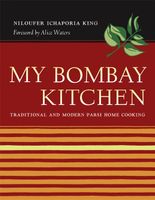Advertisement
Mango
Keri
Published 2007
Native to India, where there are hundreds of varieties, but now pantropical, mangoes (Mangifera indica) are at the very top of many people’s list of favorite fruits. The west coast of India is home to one of the most prized varieties, the Alphonso, which sometimes blinds Bombay people to the many other varieties on the market. Parsi cooking uses mangoes at all stages of ripeness. Green—meaning unripe—mangoes and middling-ripe ones are pickled in brine or oil, made into chutneys or jams, added to dhansak and other lentil dishes, and turned into drinks. Ripe mangoes are best eaten just as they are, though they lend themselves to lush ice creams, kulfis and other desserts. Alphonso mangoes haven’t been permitted into the United States yet, but there are successive waves of good to excellent mangoes of other varieties all year round, it seems, because somewhere in the world it’s mango season. Buy mangoes that are firm, not soft. A red blush is not an indicator or a guarantee of ripeness, but a characteristic of certain varieties. Several Southern California growers have had great success with mangoes. These are generally green-skinned, full of flavor, and not at all fibrous.


